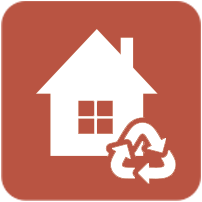
Development Features
- Divert non-hazardous construction and demolition debris
SW 1.1 Construction Waste Management
Manage construction and demolition waste in accordance with O. Reg 103/94: Industrial, Commercial and Institutional Source Separation Programs.¹
SW 1.2 Construction Waste Diversion
Divert at least 75 per cent of the total construction and demolition material; diverted materials must include at least four material streams.2,3,4,5
Specifications and Resources
- This requirement applies to large construction projects, subject to Regulation 103 94 of the Environmental Protection Act, that contain one or more buildings and have a total floor area greater than 2000m2. Provide a source separation plan for the waste that will be generated in the construction of the structure(s). See A Guide to Waste Audits and Waste Reduction Work Plans for Construction and Demolition Projects.
- Refer to LEED® V4 BD+C: MR Credit: Construction and Demolition Waste Management OR LEED® NC 2009 Credit MRc2 Construction Waste Management for further details on how to achieve this requirement. Calculations must be done by weight.
- Adopt a construction waste management plan to achieve these goals. Consider recycling cardboard, metal, brick, mineral fibre panel, concrete, plastic, clean wood, glass, gypsum wallboard, carpet and insulation.
- Construction debris processed into a recycled content commodity which has an open market value (e.g. wood derived fuel [WDF], compost or mulch, etc.) may be applied to the construction waste calculation. Exclude hazardous waste, land-clearing debris, soil, and landscaping materials from calculations.
- Calculations must be done by weight.

![]()